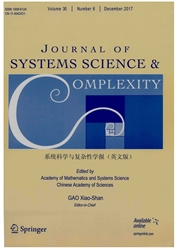

 中文摘要:
中文摘要:
在计划的以前的撤退流动,最佳的动态交通赋值 SO-DTA 没考虑外长的费用的一个系统由潜在的交通事故引起了。因为下游的车辆经验丰富的事故相关的延期,一个交通事故,可能由于交通拥挤发生,将影响一个撤退过程。这份报纸建立概括系统费用在合并旅行时间和事故相关的延期的一个基于安全的 SO-DTA 线性编程模型。目标是在房间传播安装下面最小化概括系统费用。而且,作者提供认为两个是决定制造者和撤离者的线路选择行为的目的战略指导信息。算术地,作者建议一个非强迫的非线性的编程模型瞄准了最小化在基于安全的流动和随机的真实世界的撤退流动之间的差距,到提供战略旅行时间信息在可变消息符号 VMS 上被出版。在案例研究,作者发现基于安全的 SO-DTA 模型能减少拥挤并且改进撤退效率;随机的真实世界的撤退流动,由战略信息指导了,能接近基于安全的流动。
 英文摘要:
英文摘要:
In previous evacuation flow planning, a system optimal dynamic traffic assignment(SODTA) did not consider the exogenous costs caused by potential traffic accidents. A traffic accident,which might occur as a result of traffic congestion, will impact an evacuation process because of accidentrelated delays experienced by the downstream vehicles. This paper establishes a safety-based SO-DTA linear programming model in which the generalized system cost incorporates both the travel time and the accident-related delay. The goal is to minimize the generalized system cost under the cell transmission setup. Furthermore, the authors provide strategic guidance information that considers both the objective of the decision maker and the route choice behavior of the evacuees. Mathematically,the authors propose an unconstrained non-linear programming model aimed at minimizing the gap between the safety-based flows and the stochastic real-world evacuation flows, to provide strategic travel time information to be published on variable message signs(VMS). In the case study, the authors found that the safety-based SO-DTA model can reduce congestion and improve the evacuation efficiency; the stochastic real-world evacuation flows, guided by strategic information, can approach the safety-based flows.
 同期刊论文项目
同期刊论文项目
 同项目期刊论文
同项目期刊论文
 Modeling Unsafe Bicycle-Riding Behavior in China by the Theory of Planned Behavior and Structural Eq
Modeling Unsafe Bicycle-Riding Behavior in China by the Theory of Planned Behavior and Structural Eq Optimizing bus frequencies under uncertain demand: Case study of the transit network in a developing
Optimizing bus frequencies under uncertain demand: Case study of the transit network in a developing 期刊信息
期刊信息
